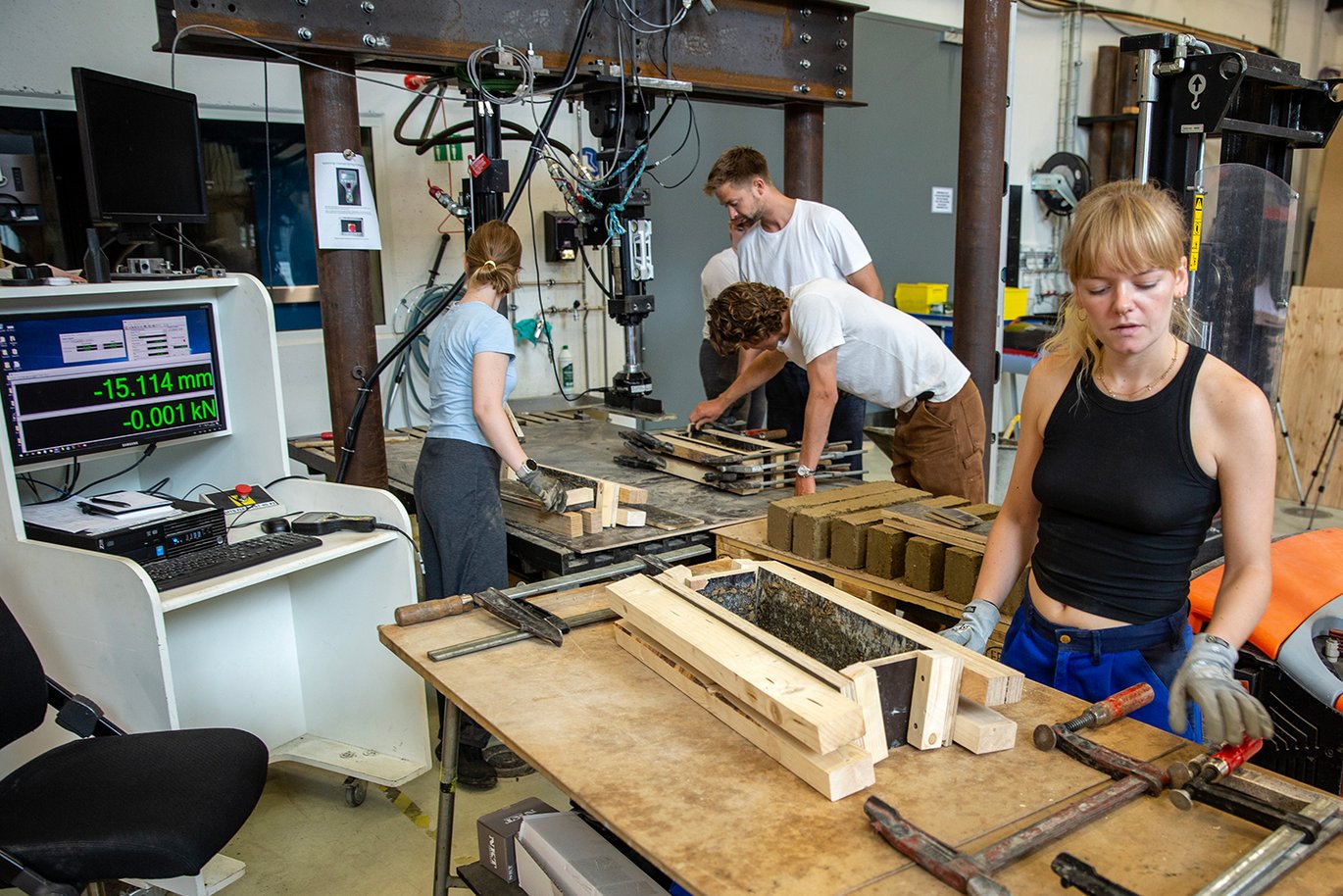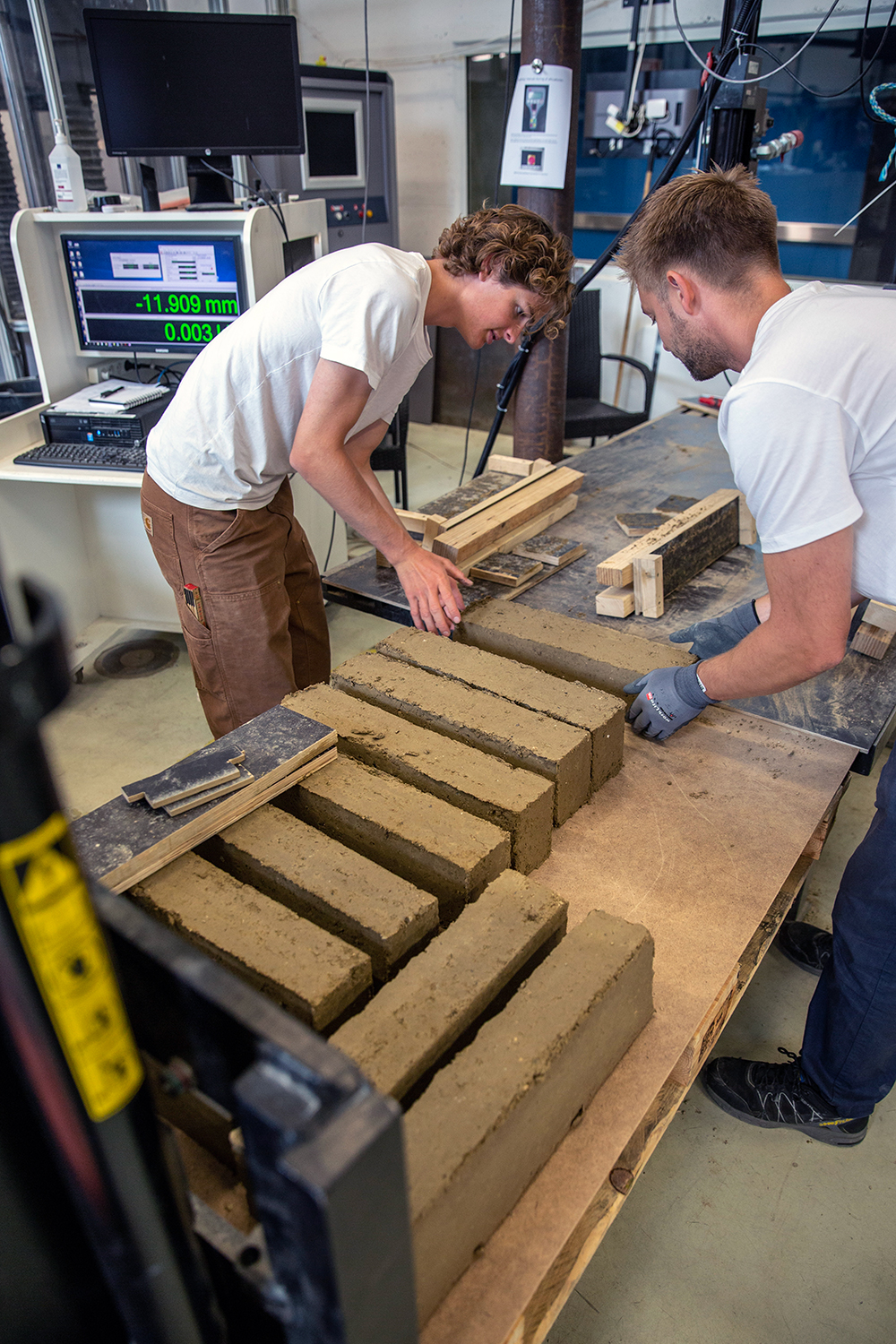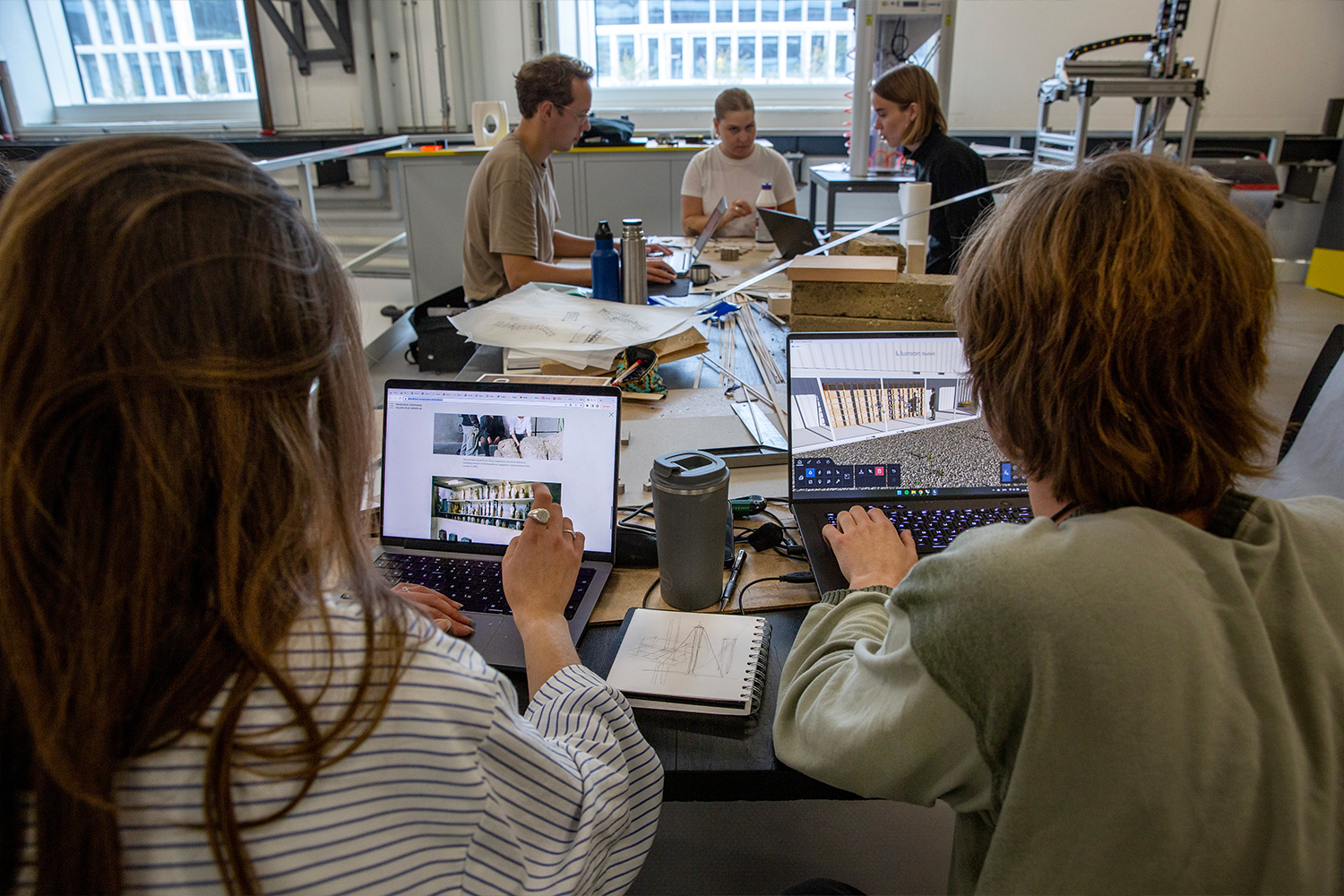Pressed clay soil could have great potential for Danish construction
Architects and engineers are working to develop the use of hydraulically pressed clay soil as a building material. The work will culminate in an exhibition during the OPEN23 architecture festival.



In the laboratory for load-bearing structures at Aarhus University, architecture and engineering students are pressing 200 clay bricks measuring 45 x 12 x 9 cm under the guidance of university researchers. The bricks are a special mixture of clay, sand and gravel, which is pressed in three stages at a 10 tonnes pressure.
Jorden Kalder (the soil calls) is the name of the project, and it was initiated by ReVærk architects in collaboration with Aarhus School of Architecture and the Department of Civil and Architectural Engineering at Aarhus University to investigate and develop the use of pressed clay as a building material for a future much more sustainable construction sector.
"Clay is a natural material, and pressing the soil instead of firing it means we don't expend anywhere near the same amount of energy in production as we do for standard clay bricks. What’s more, the material can easily be recycled. Of course, it doesn't have quite the same properties as fired brick, but that's why we’re examining these clay bricks our students are making by pressure testing them and performing static observations for their use. It’s vital that we develop new materials for construction, which today accounts for the vast majority of the world's anthropogenic climate impact," says Associate Professor Annette Beedholm Rasmussen.
Today, construction accounts for a large percentage of global anthropogenic carbon emissions. In fact 39 per cent of energy-related carbon emissions. Approx. 11 per cent is from material extraction and construction projects, and the remaining approx. 28 per cent is from the human need for heating, cooling, ventilation and lighting in buildings.
In any kind of sustainable future, we must reduce this share considerably and, among other things, we can do this by developing new ways of using materials. Pressed clay soil may be part of this future, says architect Caroline Nørgård from ReVærk:
"Surplus soil from the construction industry is a huge resource that we believe has great potential. We still need a lot of technical data, but we hope that unburnt clay soil can gain traction in Danish construction out of consideration for both the environmentally friendly benefits, but equally to the architectural qualities of the material," she says.
The students participating in the project are also very interested. The team of students includes architecture students from Aarhus School of Architecture and engineering students from Aarhus University, and they have been divided into groups that are responsible for producing the clay bricks as well as designing a structure to be built from the bricks produced.
Hannah is in the third semester of her civil and structural engineering studies, and she says:
"I think it's a unique opportunity for architects and engineers to work together to create materials in a new way. And I think this is vital. In the future, we won’t build in the same way as we’ve been doing up to now. Things are going to change: they have to change. But not in a negative way. We’ll have even more opportunities".
Oscar, who is in his fifth semester studying to become an architect, backs her up:
"It's interesting to put old material into a new context and a new narrative. I think that the clay blocks we’ve made are very sculptural. They have character, they’re tactile and textural, and they’re very exciting and unique to work with. And it’s important that people can see that you can actually use these new materials to build real houses you can live in."
The final structure will be exhibited at the OPEN23 architecture festival on 7 September. The exhibition is being curated by Karen Kjaergaard at Aarhus School of Architecture.
Contact
Associate Professor Annette Beedholm Rasmussen
Department of Civil and Architectural Engineering
Mail: abra@cae.au.dk
Tel.: +4523670263
